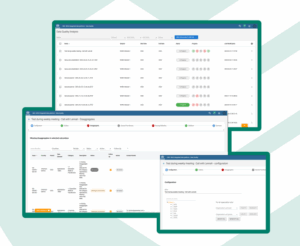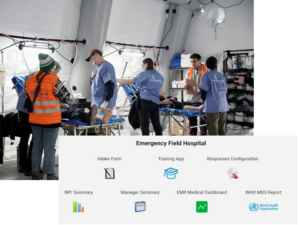The World Health Organization is testing the use of AI for educational purposes, as a clinical decision support tool for non-specialised primary health workers to help them identify skin diseases in low resource settings.
The aim is that workers with little training in dermatology have a pocket tool that in a few seconds will give a list of diseases that could be the cause of the patient’s lesion. The results obtained testing the app in a study in Kenya are very promising
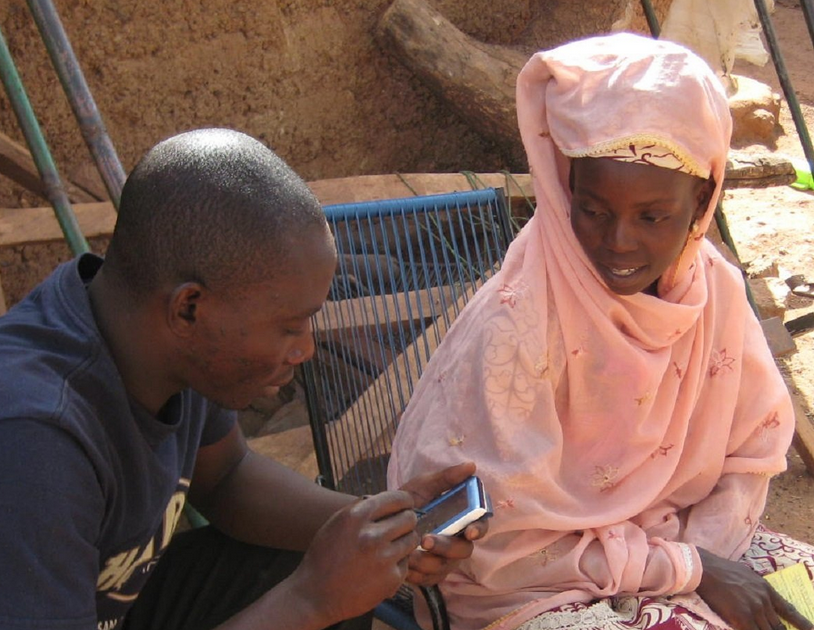
Neglected tropical diseases (NTDs) affect over 1.5 billion people worldwide, primarily affecting impoverished populations in low and middle-income countries. More than half of the NTDs present with skin manifestations and can cause long-term disability, stigmatization and mental health problems. However, when properly diagnosed, some of them can be easily treatable.
To help frontline health care workers, the World Health Organization (WHO) introduced the SkinNTDs app. The app employs an algorithm to assist health workers in making accurate diagnoses and treatment decisions. It also includes a “Skin NTDs Learning” section, offering valuable training materials for front-line health workers. The feedback from workers on the field using the app has been very positive.
Now, researchers are expanding its functionalities thanks to the power of Artificial Intelligence (AI). WHO is collaborating with Universal Doctor and Belle.ai in a new version of the app customized to help primary care workers with a very limited, but very common list of diseases. This beta version incorporates two online AI-based algorithms that can classify photos of skin lesions instantly. Field tests in Kenya assessed the usability and performance of these AI algorithms in real-world conditions, with very promising results. These studies are being carried out through an app developed by EyeSeeTea.
There are not enough dermatologists in the world to handle millions of people affected by skin diseases. Health workers in the field are key to managing these diseases. So, we conceived this app as a practical way to digitise a manual that can't be carried in a pocket and that WHO can't print to give to all the health workers on the planet
Dr José Antonio Ruiz-Postigo, Medical Officer, Global Neglected Tropical Diseases Programme, WHO headquarters.
Innovative approaches against Skin NTDs
Early detection is a critical aspect of several skin-related neglected tropical diseases. It is key to treat people affected and also to prevent transmission in the community. However, the prevalence of these diseases in areas with low resources and the shortage of dermatologists in low income countries to diagnose skin diseases is a huge obstacle to achieve it.
AI can be a powerful ally to tackle skin-related NTDs, improving and speeding up the diagnostic process, which could potentially modify the approach to disease management. The most recent beta version of the WHO Skip App incorporates two online AI algorithms that classify skin lesion images (uploaded by front-line health workers) to identify 12 skin NTDs (leprosy, leishmaniasis, scabies…) and 24 common skin conditions.
The app incorporates a visual classification system based on a Convolutional Neural Network (CNN). CNNs learn to identify patterns and nuances in visual data by processing many examples. The effectiveness of the CNN hinges on the diversity and volume of the image dataset used during the training phase; a broader dataset enhances the ability to accurately recognize and classify unseen images.
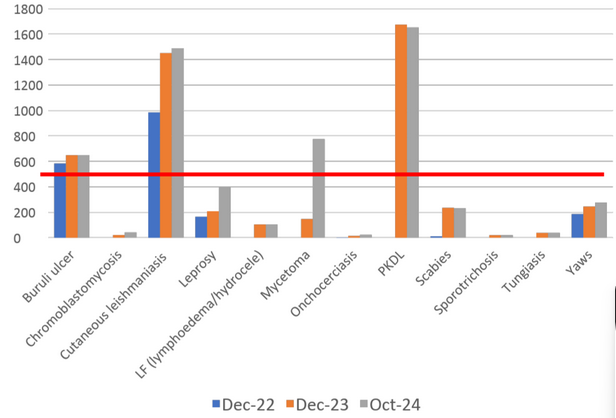
The beneficial impact of AI and its incorporation into tools enabling efficient and accurate identification of diseases, will only be fully realized when centred around principles of ethics and human rights throughout its development, implementation and utilisation. As Dr José Antonio Ruiz Postigo explains, “The important thing is to be clear about the benefits and limitations of AI as a tool to help improve patient care. The ultimate goal is to augment human intelligence, not to replace it.”
A NTD Image Evaluator powered by DHIS2
Now, the researchers are already evaluating the accuracy of the new AI models implemented in the app in a real clinical context in Kenya. To do so, EyeSeeTea has developed an app using DHIS2 software. This app has been used by the health workers to upload more than 600 patient images. Three independent dermatologist have used the same app to diagnose these images. Each evaluator can not see the diagnose from the others. Then, the application analyses how their diagnose match the ones done by AI models.
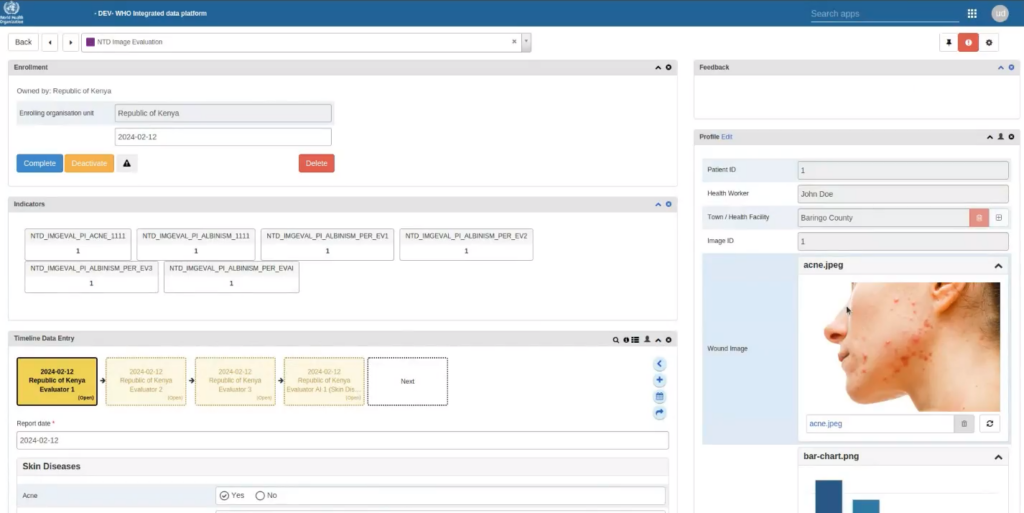
"It is always so rewarding to work on a project such as this. We combine the powerful DHIS2 open source software with cutting edge AI models to fight neglected diseases. It is an incredible opportunity to work with experts such as José Antonio Ruiz"
Ramón Jiménez, EyeSeeTea's Project Manager
Up until now, the results are very promising. Primary care workers are usually diagnosing correctly around 30%-40% of the skin lesions they see. Compared to this, the performance of the app in terms of sensitivity is twice what a regular primary care worker would reach.
What is next?
The study conducted in collaboration with the Ministry of Health from Kenya will assess the practicality and effectiveness of the application in real-world settings, ensuring that the tool can reliably assist in the early detection of diseases and their differential diagnosis. The results will be soon published in a peer reviewed publication.
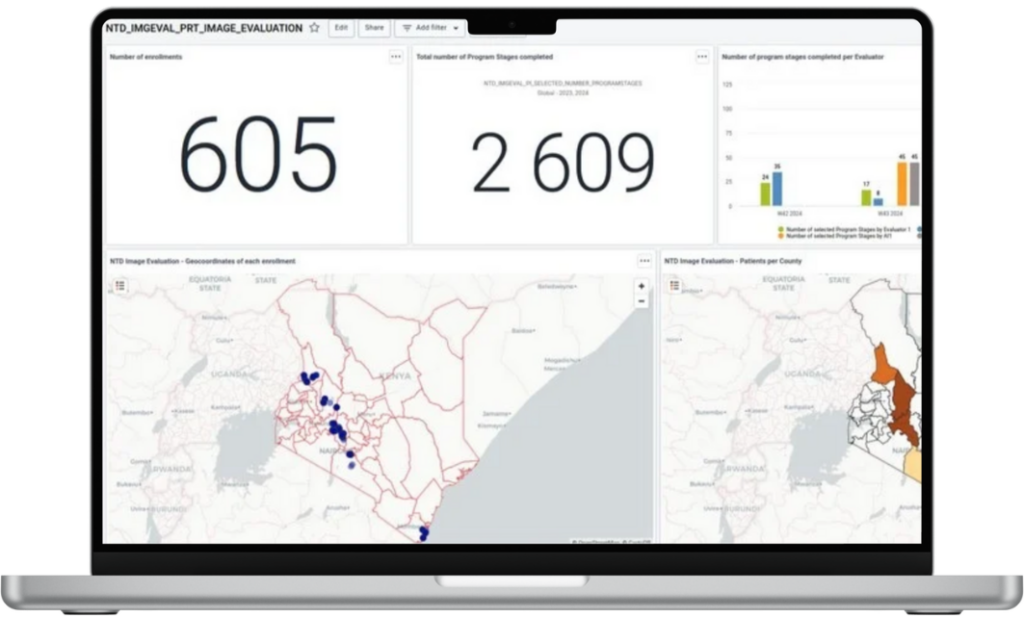
The next steps will be to replicate the study in other countries, such as Côte d’Ivoire and Cameroon, explains Dr Jose Antonio Ruiz Postigo. For these studies the three evaluators will only have the images, with no clinical information about the patients, as it was with the study in Kenya.
If the current promising results are furtherly validated, this application could be a game changer for field workers dealing with skin conditions. It could be one key step towards ending the neglect around these diseases and attain one of the 2030 Sustainable Development Goals: 90% fewer people requiring interventions against NTDs
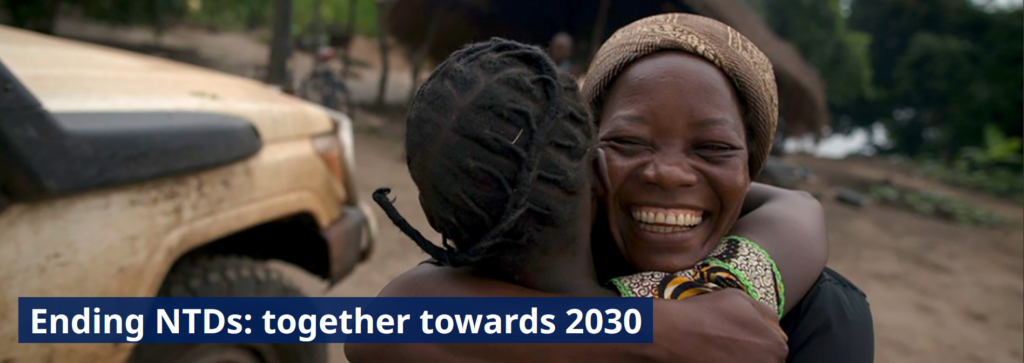
Additional resources
- WHO Skin NTDs App: Apple App Store – Android App Store
- Study protocol: Assessing the Quality of the World Health Organization’s Skin NTDs App as a Training Tool in Ghana and Kenya: Protocol for a Cross-sectional Study – PubMed
- Results: Evaluating the World Health Organization’s SkinNTDs App as a Training Tool for Skin Neglected Tropical Diseases in Ghana and Kenya: Cross-Sectional Study – PubMed

